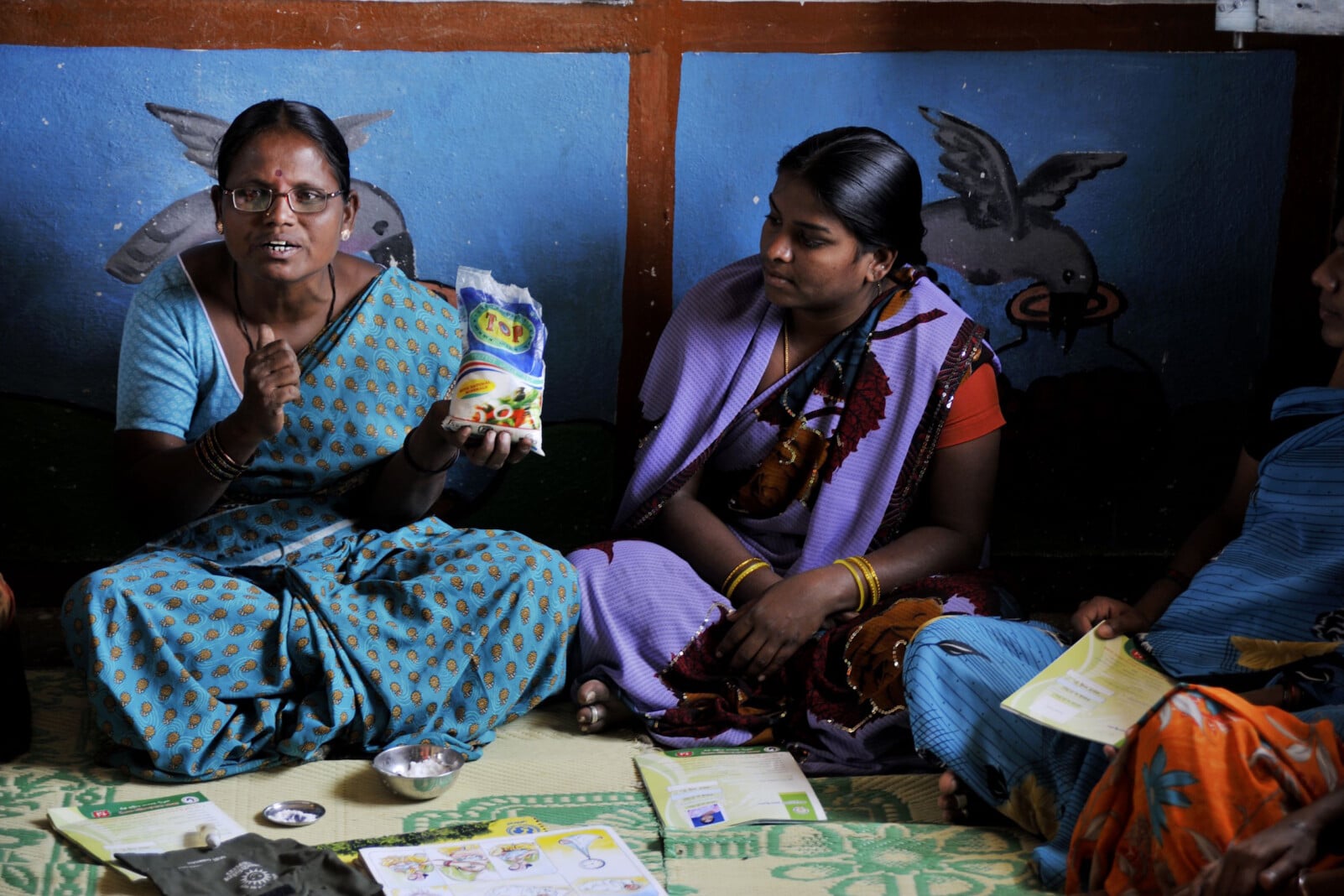Worldwide, 89 per cent of people consume iodized salt
Iodine deficiency can lead to a variety of health and developmental consequences known as iodine deficiency disorders (IDDs). Iodine deficiency is a major cause of preventable mental retardation. It is especially damaging during pregnancy and in early childhood. In their most severe forms, IDDs can lead to cretinism, stillbirth and miscarriage; even mild deficiency can cause a significant loss of learning ability.
For the last 30 years, universal salt iodization has been the most widely used strategy to improve population iodine intake and prevent IDD. The latest estimates indicate that globally, 89 per cent of the population used salt with some iodine in 2020 – meaning nearly 1 billion people did not consume iodized salt. East Asia and the Pacific and South Asia had the highest coverage with iodized salt at 92 per cent and 90 per cent respectively. The lowest coverage with iodized salt was seen in Eastern and Southern Africa, where just over 4 in 5 in people had access to salt with any iodine. Insufficient recent data (2014-2020) were available to generate estimates for four regions of Europe and Central Asia, Latin America and the Caribbean, Middle East and North Africa, and North America.
Disparities in coverage
The majority of countries with equity data on household wealth show some degree of inequity in favor of the richest households for consumption of iodized salt (i.e. 49 of the 82 countries, or 60 per cent of countries with data are red or yellow in the figure below – representing countries where the richest had coverage estimates that were at least 10 per cent higher than the poorest). Of these 49 countries showing a higher coverage among richest when compared to poorest, only 6 had coverage that was at least twice as high as the poorest households (red circles). One in three, or 30 out of the 82 countries with data, showed equity between the richest and poorest households for consumption of iodized salt. The data also show that countries with higher overall coverage (circles in the top right quadrant) tend to have more equitable distribution of coverage (i.e. most circles are green in the top right quadrant).
The ultimate goal is to ensure that the population iodine status, as assessed by indicators including urinary iodine concentration, is adequate (i.e. not too high and not too low), including among different vulnerable groups. While the data reported on this page refers to salt with any iodine (>0 ppm), each country aims to have a range of iodine (e.g. 15-40 ppm) in their salt that will support adequate iodine intake and status. A sufficient level of iodine in salt should be defined based on local conditions and linked with iodine status and, if available, salt intake data. Countries can use data on different indicators, including iodized salt consumption, quality of iodized salt and iodine status, to adjust programs as necessary.
References
WHO, Assessment of Iodine Deficiency Disorders and Monitoring Their Elimination: A guide for programme managers, Third Edition, WHO, Geneva, 2007.
UNICEF, Sustainable Elimination of Iodine Deficiency: Progress since the 1990 World Summit for Children, New York, 2008.
Iodized salt consumption
Iodized salt data
Build and download your own customisable dataset
Resources

Notes on the Data
Monitoring elimination of iodine deficiency disorders
A set of guidelines for monitoring IDD control programmes with both process and impact indicators are described in the World Health Organization (WHO) manual, Assessment of Iodine Deficiency Disorders and Monitoring Their Elimination. With regard to process, it is important to monitor salt iodine content at the levels of production/importation, retail/wholesale sales, and in the household (consideration should also be given to assessing the use of iodized salt in the food industry, where relevant). To monitor impact, median urinary iodine concentration is the main indicator for assessing a population’s iodine status, with total goitre prevalence providing additional useful information. WHO maintains a database on programme impact with indicators related to urinary iodine and goitre prevalence.[1] UNICEF maintains a database on household consumption of iodized salt. Currently, no agency is responsible for reporting on other process-related indicators regarding production, importation or sales. Ideally, the entire set of process indicators should be combined with impact data to best guide programmes and policies in individual countries.
The indicator
The indicator presented on this page, ‘Percentage of households consuming iodized salt’, provides part of the picture with regard to monitoring IDD elimination efforts.
| Indicator name | Definition | |
|---|---|---|
| Numerator | Denominator | |
| Percentage of households consuming iodized salt (>0 ppm) | Number of surveyed households which had salt they used for cooking which tested positive (>0ppm) for presence of iodine. | Number of surveyed households |
| Percentage of households consuming iodized salt (>0 ppm) among all tested households with salt | Number of surveyed households, which had salt they used for cooking which tested positive (>0ppm) for presence of iodine. | Number of surveyed households that had salt |
The latest monitoring manual suggests a minimum of 15 parts per million (ppm) of iodine in salt. The amount of iodine in salt samples is important to assess: To be fully effective in correcting iodine deficiency, salt with iodine must not only reach the entire affected population, it also needs to have sufficient (yet not too much) iodine. While some countries may have different targets (e.g. 12 ppm), the WHO recommendation is to have a concentration of 15 to 40 ppm of iodine in salt at the household level. However, the assessment of iodine in salt through household surveys has generally been accomplished through the use of rapid test kits, yet, WHO recommends to only use rapid test kits to indicate the presence of iodine, and to use quantitative methods (e.g. titration) to quantify and report on iodine content in salt.. At present, very few countries have quantitative estimates for iodized salt based on recommended methods but as availability of such data increases, the database may be updated to also include estimates related to iodine content of salt.
The assessment of iodine content has generally been accomplished through the use of rapid test kits. While the test kit cannot provide data that are as precise and accurate as titration, it remains the test method associated with most data points in ’s global database. Based on recommendations from WHO to only use rapid test kits to indicate the presence of iodine, and to use another method – titration – to quantify and report on salt with a particular amount of iodine, a number of countries have stopped reporting on the cut-off of ≥15 ppm and only report on salt with any iodine (>0 ppm) in many recent surveys.
Note: The indicator presented in the first map on this page is the “percentage of households consuming iodized salt” while estimates for a similar but different indicator of “percentage of households that had salt which consumed iodized salt” is available in the downloadable datasets.
Data collection and reporting
Data for household consumption of iodized salt are collected mainly though nationally representative household surveys, such as MICS and DHS. A more limited number of national estimates in the global database come from primary school-based surveys in countries where the primary school net enrolment rate exceeded 90 per cent at the time of the survey or also from surveillance systems.
Limitations
There are a variety of limitations associated with reporting on progress in household consumption of adequately iodized salt, many of them linked to advancements in methodologies and programme maturation. Great strides have been made in enhancing programme monitoring, leading to increased availability and improved quality of data over the past decade. At the same time, they render older data points non-comparable to newer ones, thereby limiting the ability to undertake trend analyses. Some key issues are highlighted below:
Shift from monitoring production to household consumption
- Questions about household consumption of iodized salt were only added to major household surveys starting in the mid-1990s. And even then, not all countries had estimates based on household data. In the early to mid-1990s, many national estimates presented in UNICEF’s annual report The State of the World’s Children were based on extrapolations from iodized salt production figures. Since these estimates are not comparable to the current household consumption-based data, they cannot be used for trend analysis.
Testing for iodine in household salt samples
- Self-reporting: Although the move from production to household consumption-based estimates was a positive one, it still introduced some bias since early estimates were often based on self-reporting. Even some early DHS did not test household salt for the presence of iodine, relying on self-reporting by the respondent or a cross-check against the label/brand name of the salt by the survey interviewer. These self-reported estimates are not comparable to the current household consumption-based data which require the salt be tested for presence of iodine and cannot therefore be used for trend analyses.
- Rapid test kits for presence of iodine: These kits allow for salt to be tested for presence of iodine and were introduced into many surveys in the mid- to late 1990s as a means of cross-checking a sample of salt within the household during the survey. This helped in decreasing the bias of estimates based on self-reporting from household survey data and represents one of the first examples of direct testing in household surveys. Currently, nearly all MICS and DHS as well as most other national household surveys/monitoring mechanisms include a salt-testing component using rapid test kits for iodine.
- Quantitative tests for iodine: The most recent WHO recommendation is to use quantitative methods such as titration to quantify iodine content in salt samples gathered through household surveys. These recommendations also call for use of rapid test kits to indicate presence of iodine only. Since the use of quantitative methods to assess for iodine content is far from universal, and with many countries only reporting on salt with any iodine based on rapid test kits, the ability to report on adequately iodized salt in the global database has not been possible to date
